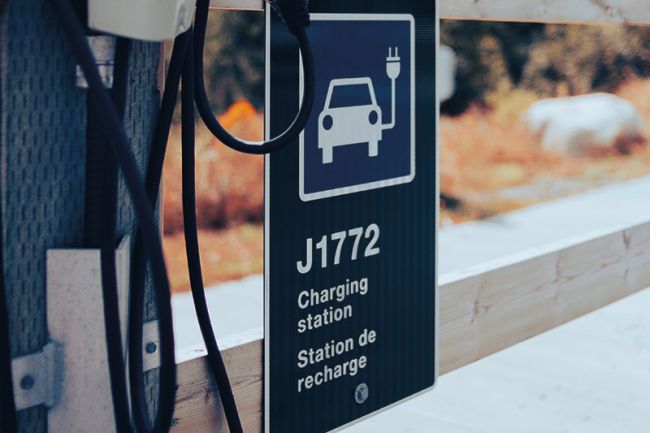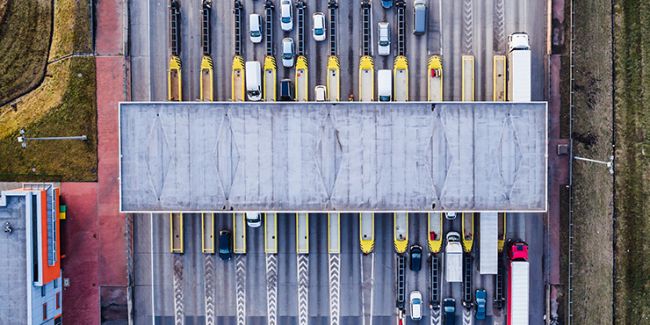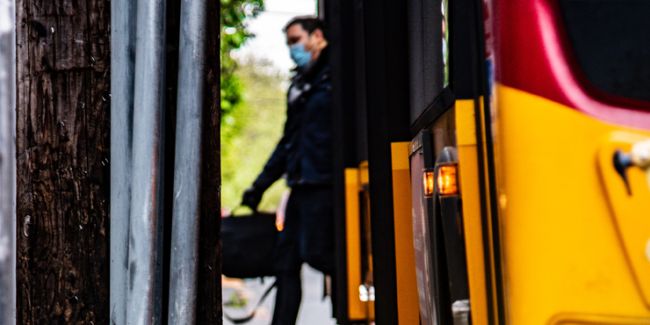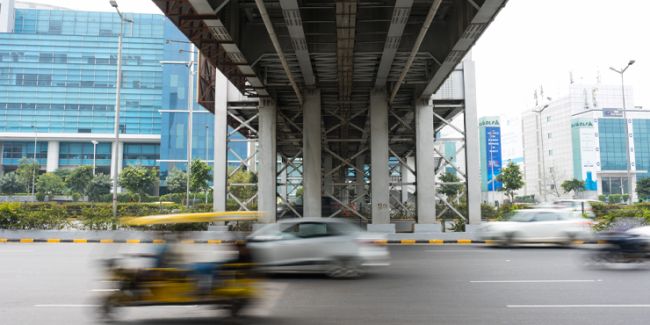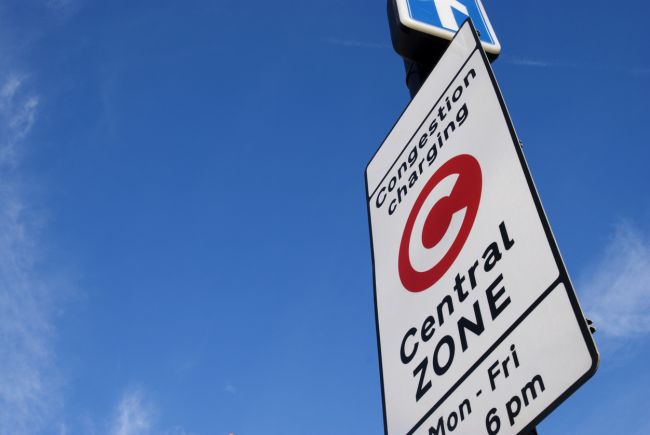Recovering India’s toll roads
We recently interviewed J. Subramanian to learn more about his current challenges during COVID-19.

 We recently interviewed Mr J. Subramanian (JSN), the Chief Executive Officer of LTIDPL IndvIT Services Ltd. (Investment Manager (IM) of IndInfravit Trust); one of the leaders of the Public-Private-Partnership (PPP) model of development in India, and one of India's largest road developers under concession agreements signed with the Central and State Government authorities. We wanted to learn more about his current challenges during the COVID-19 suspension of toll road collections and what measures had to be taken for the road industry to bounce back.
We recently interviewed Mr J. Subramanian (JSN), the Chief Executive Officer of LTIDPL IndvIT Services Ltd. (Investment Manager (IM) of IndInfravit Trust); one of the leaders of the Public-Private-Partnership (PPP) model of development in India, and one of India's largest road developers under concession agreements signed with the Central and State Government authorities. We wanted to learn more about his current challenges during the COVID-19 suspension of toll road collections and what measures had to be taken for the road industry to bounce back.
JSN is well-versed within the road infrastructure industry and plays a key leadership role in the IM. His responsibilities lie in managing the assets for and behalf of the trust that owns them – there are currently a total of 13 assets, of which five assets were transferred to the trust from L&T IDPL. Prior to moving into his role of CEO, he spent 12 years at L&T IDPL, primarily within the business development function, where he was part of the bidding team for three of the five assets.
While lockdown continues across the country, the National Highways Authority of India (NHAI) resumed toll collection on national highways from 20th April (which was suspended since 25th March during lockdown). JSN is quick to point out that the road network will be one of the first industries to bounce back from the pandemic as recorded transactions see an increase in road traffic from 25% of pre-COVID level of traffic, rising to almost 60-70% in May. However, while the portfolio of projects indicates a steady upward trend, the concern remains as to whether we will ever see a 100% capacity. JSN is determined to reach an optimistic peak level of 80-90% traffic by October 2020, however, a full 100% recovery may be a while away.
The outbreak of COVID-19 has impacted all sectors, and despite those first to reopen for business, such as agriculture, mining, pharmaceuticals and essential groceries, will still suffer to revive completely. JSN explains that “India works through migrant labourers”. For instance, 60% of the workforce in Chennai is made up of migrant labour. However, reverse migration has suddenly picked up pace and a large fleet of migrant workers are vanishing away from the city back to their native villages in Rajasthan, Odisha, Bihar and Uttar Pradesh. Manufacturing and construction industries will inevitability struggle to reach maximum operating capacities despite the relaxation of lockdown, due to both lack of labour availability and social distancing norms that need to be maintained.
At present, there are 570 operating toll plazas on the national highways across India. These include both publicly funded ones, which are under the direct control of NHAI and projects which are under build operate and transfer (BOT) model. JSN describes three major challenges the toll road industry will face going forward:
- Continued COVID scare – if any cases are reported around the toll plaza areas it can lead directly to further toll road suspensions and subsequently additional loss of revenue.
- Aligning with challenging requirements of compliance - business cannot go back to how it was operated before the outbreak. Observing all safety precautions, highlighting the social distancing measures daily and stressing the importance of rule violation will be prominent to operating the toll booths. This will render working at full capacity impossible.
- Availability of workforce – it’s undeniable that cash toll collectors are more prone to infection, so if one member of the team is infected, the entire workforce of around 40 workers will begin to quarantine. Consequently, this has a drastic effect on the operational activities for the entire team. To mitigate this, batches of varying shift hours are employed, with the entire workforce being split. Among a few projects, they are made to stay in separate hotels to avoid infection spread back to the villages, wherefrom they hail. This, of course, comes at an additional expense.
Despite these challenges, JSN’s ability to see the bigger picture for the toll road network is aided by the opportunities to have come out of this; the first significant one being FASTag utilisation. NHAI rolled out the electronic toll collection programme across India in December 2019. FASTags are prepaid rechargeable tags for toll collection that are affixed on the widescreen of your vehicle and allow automatic payment deduction without having to stop the vehicle at the gate. Now more than ever, it has helped to man the toll booths with a limited workforce and reduce the risk of infection through minimal human contact. The migration to FASTag collection for commercial traffic has resulted in an increase of collections as more people step away from using cash.
Secondly, people are more inclined to use traditional toll road routes as they are trusted, safer options as opposed to finding alternatives means of travel. Less diversion from these toll routes, means greater toll collection.
It would be remiss to not ask JSN about what the Government authority has provided as compensation for the loss of revenue during toll road collection suspension. He is assured that the NHAI has acted promptly to this crisis and the absence of delay on their part is seen as a positive approach to restoring toll revenue and developments. The main elements to this package include:
- Extension of the concession period by 25 days across all concessions in India (min. 3 months, max. 6 months), citing the suspension of toll collection during lockdown akin to a ‘Political Force Majeure’;
- For projects that fall below 90% of the daily average collections, the concessionaire is entitled to a day’s extension if a loss of 25% is incurred as compared to the average daily collections for four days of the preceding accounting year;
- The NHAI will provide special COVID-19 loans for three months between 1 March and 31 May, with interest, as well as maintenance expenses to be capped at 1% of the overall project cost;
- Further negotiations to defer payment of premium on assets to the end of the concession period as opposed to upfront payment is also being discussed alongside considering deferment of any major maintenance cycles to reduce costs.
From a toll road operator perspective, JSN evidently reminds us that despite India having the highest rate of density population in the world, the Governments, both at Union and State levels, commenced necessary actions to revive the economy. He believes India’s young, growing population and the care packages and funding aid the Government has released, will keep the GDP growth relatively better as opposed to some other western countries, which might see significant reduction. The effect of COVID-19 is widely noticed in the world's most developed countries like US and Europe and while India is bound to be affected, it has put all its machinery and material into motion at an early stage and industries like the toll road network will gradually bounce back regardless of the temporary reduction in travel.
JSN declares it’s time to prepare for a new reality. He conveys a simple encapsulating message: “we must learn how to work in a sub-optimal world”. The way we conduct ourselves, lead our lives and businesses going forward, will be a drastic change for the world. For a conservative public that resides in India, it will be apparent to make some lifestyle changes and change the culture of the industry and working practices. Effectively working within a constrained environment will become the new normal and adjusting to PPE kit will be a difficult adjustment for all. For success, JSN is confident the entire industry will move in the right direction.



